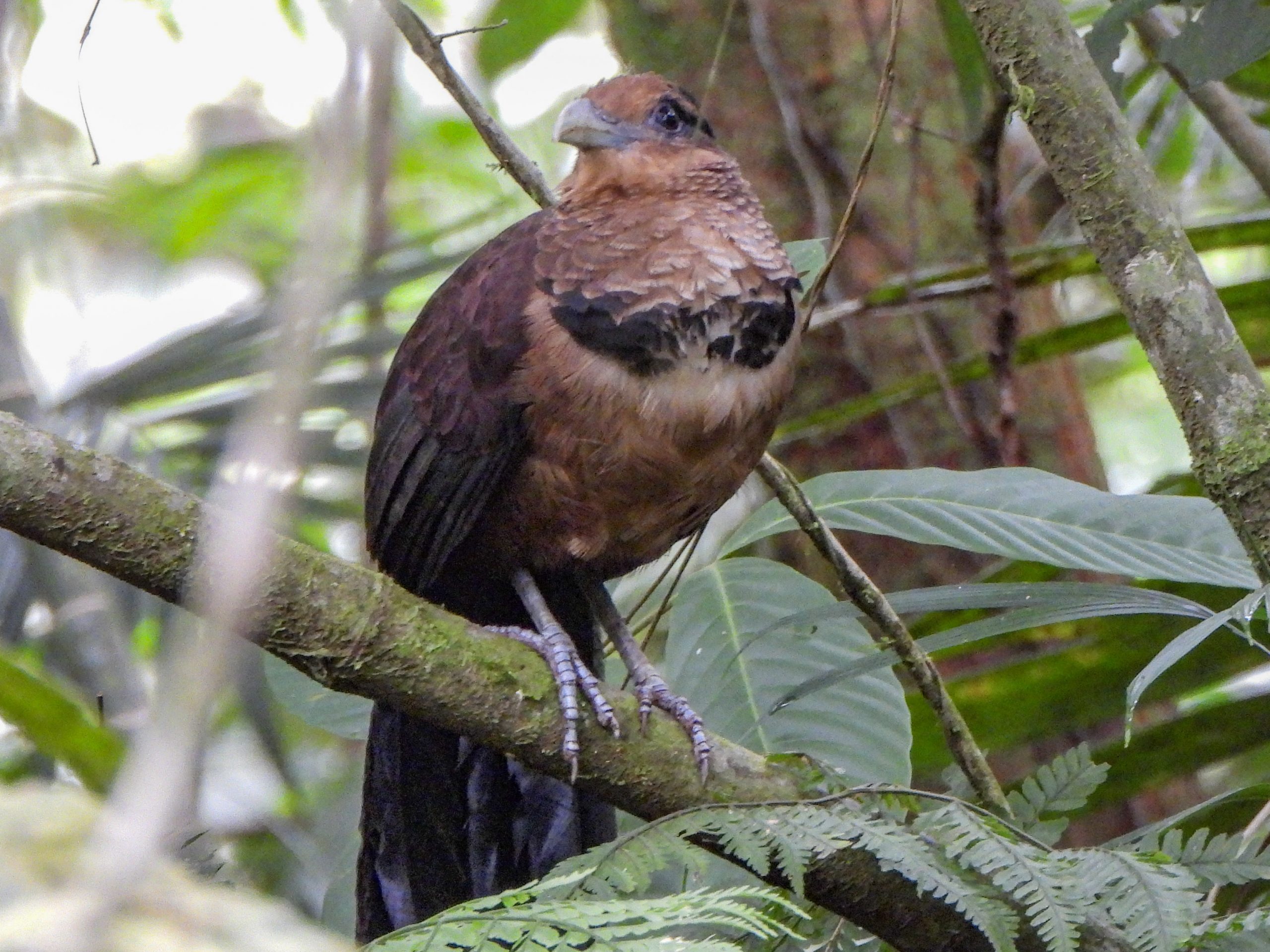Rarely Seen Roadrunner Relative
For birders with a “life list” of sighting dreams come true, the rufous-vented ground-cuckoo will commonly disappoint. Reports of fleeting glimpses have always been rare, even among the most ardent birdwatchers who concur this is one of the most elusive species to spot.
To appreciate the stir caused by no less than seven of these mysterious creatures at a Costa Rican conservation site in early February 2021, read the Howler article Meet Costa Rica’s Latest Bird Celebrity.
Beyond its holy-grail renown, the rufous-vented ground-cuckoo (Neomorphus Geoffroy) is a southern relative of North America’s famous roadrunner. Birding sources typically describe the large ground-dweller as unmistakable if seen well, but very difficult to find. Look for a robust bird with a long tail, shabby crest, and stout pale yellowish bill. The overall brownish color is offset by a black breast band and green and purple metallic sheen on the wings and tail. Mature birds measure about 48 centimeters (19 inches) in height and weigh about 350 grams (12 ounces).
The rufous-vented ground cuckoos patchily distributed habitats extend from Honduras to Brazil, in lowland forests and occasionally into foothills up to around 1,600 meters. Three distinct regional populations have been identified as follows: from southern Nicaragua, through Costa Rica and Panama, into northwestern Colombia; eastern Ecuador and Peru, and northern Bolivia and Brazil; and Brazil’s Atlantic Forest.
Singles or pairs are typically found following army ant swarms on the forest floor, feeding off the large insects, scorpions, centipedes, spiders, small frogs, and lizards that the ants have disturbed.
Research has revealed that ground-cuckoos of the genus Neomorphus produce a clacking sound with their beaks similar to the sound peccaries (wild pigs) make when alerting each other to danger.See page 58 in full screen!JTNDaWZyYW1lJTIwYWxsb3dmdWxsc2NyZWVuJTNEJTIydHJ1ZSUyMiUyMHN0eWxlJTNEJTIyYm9yZGVyJTNBbm9uZSUzQndpZHRoJTNBMTAwJTI1JTNCaGVpZ2h0JTNBMzI2cHglM0IlMjIlMjBzcmMlM0QlMjIlMkYlMkZlLmlzc3V1LmNvbSUyRmVtYmVkLmh0bWwlM0ZiYWNrZ3JvdW5kQ29sb3IlM0QlMjUyM2IzOTA0YiUyNmQlM0QyMDIxMDVfbWF5X2ludGVybmF0aW9uYWxfZGlnaXRhbCUyNnUlM0Rob3dsZXIlMjIlM0UlM0MlMkZpZnJhbWUlM0U=NEW: hear the story!






